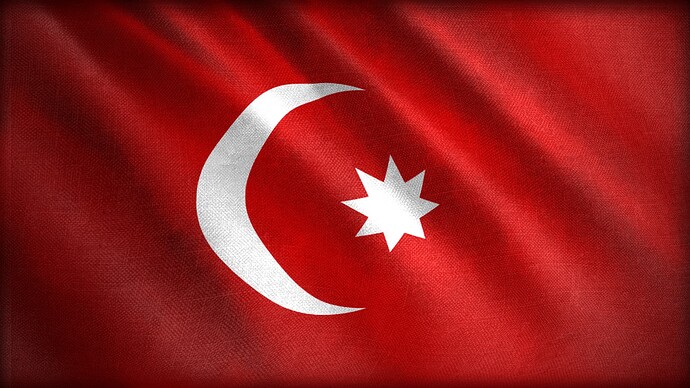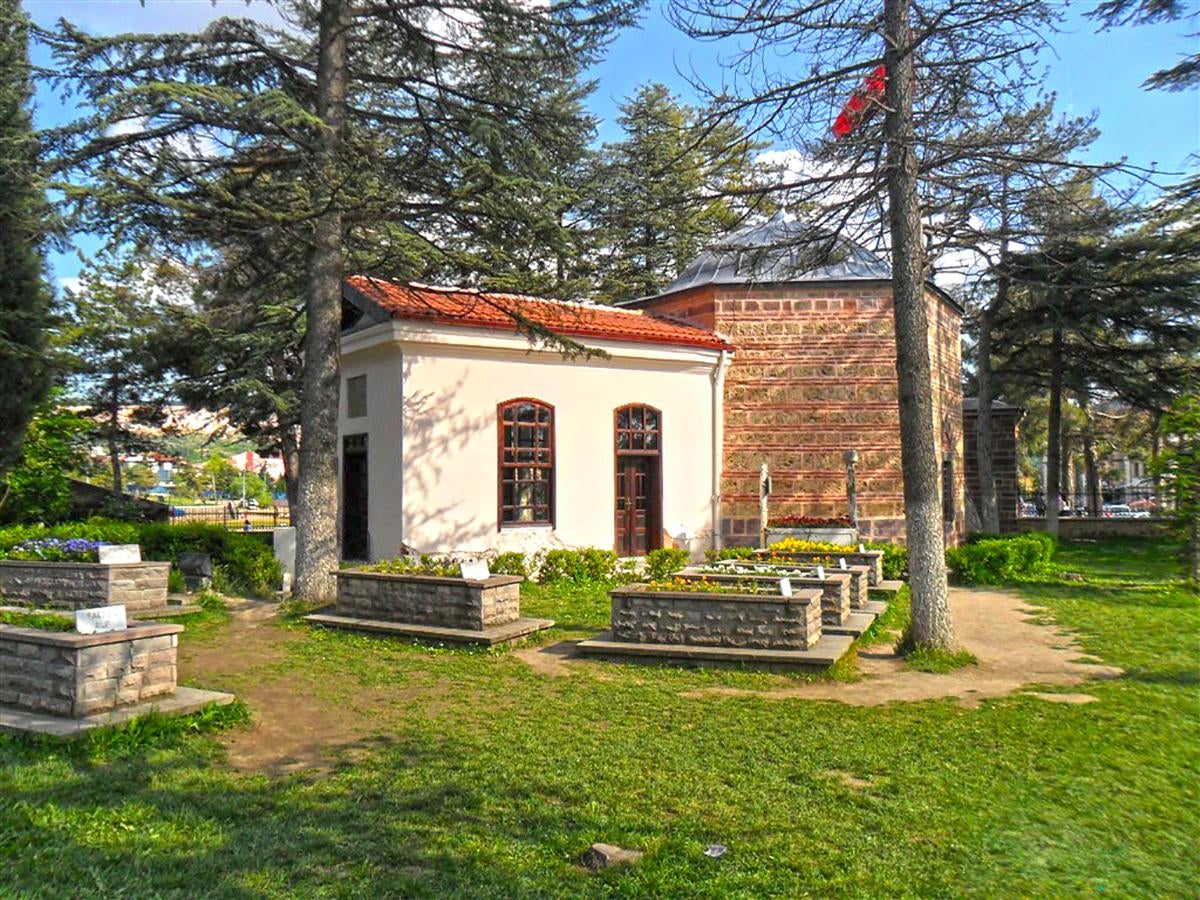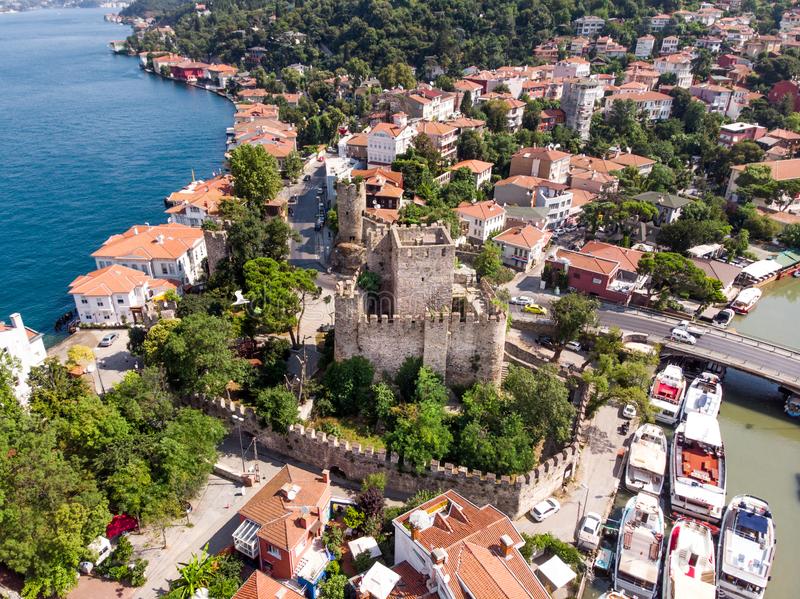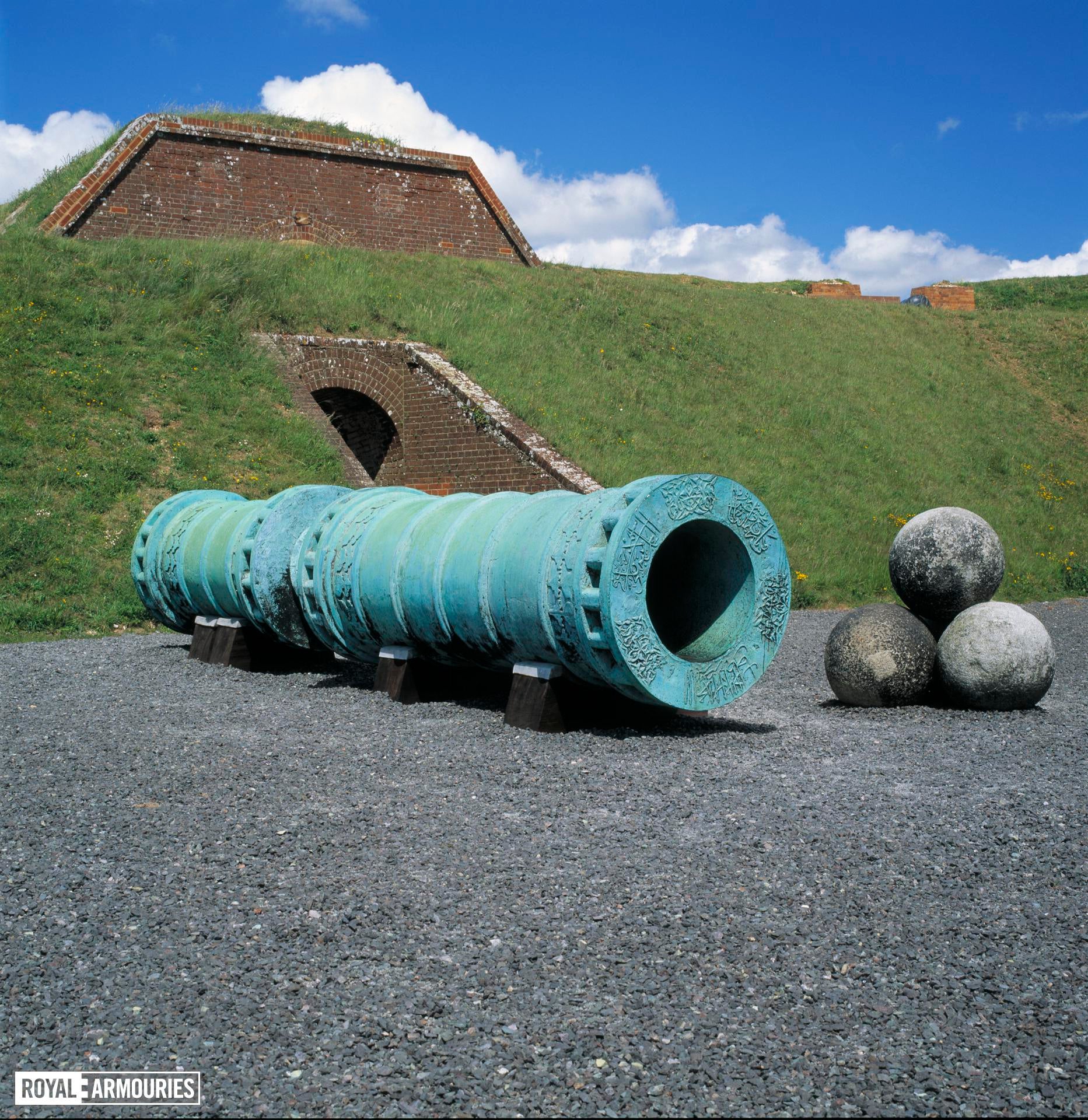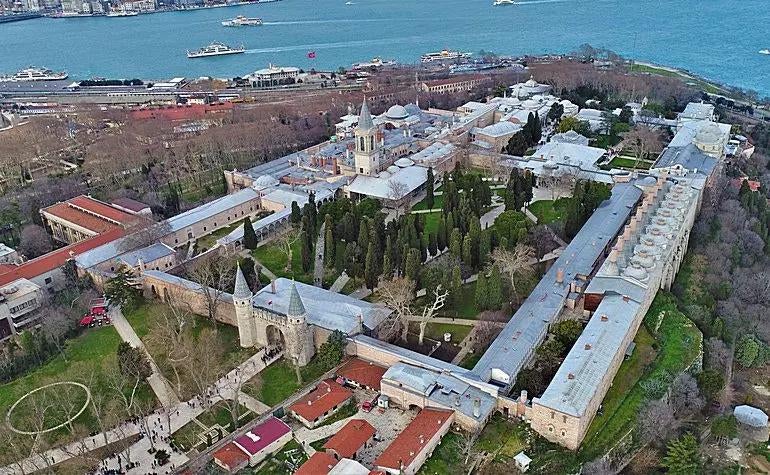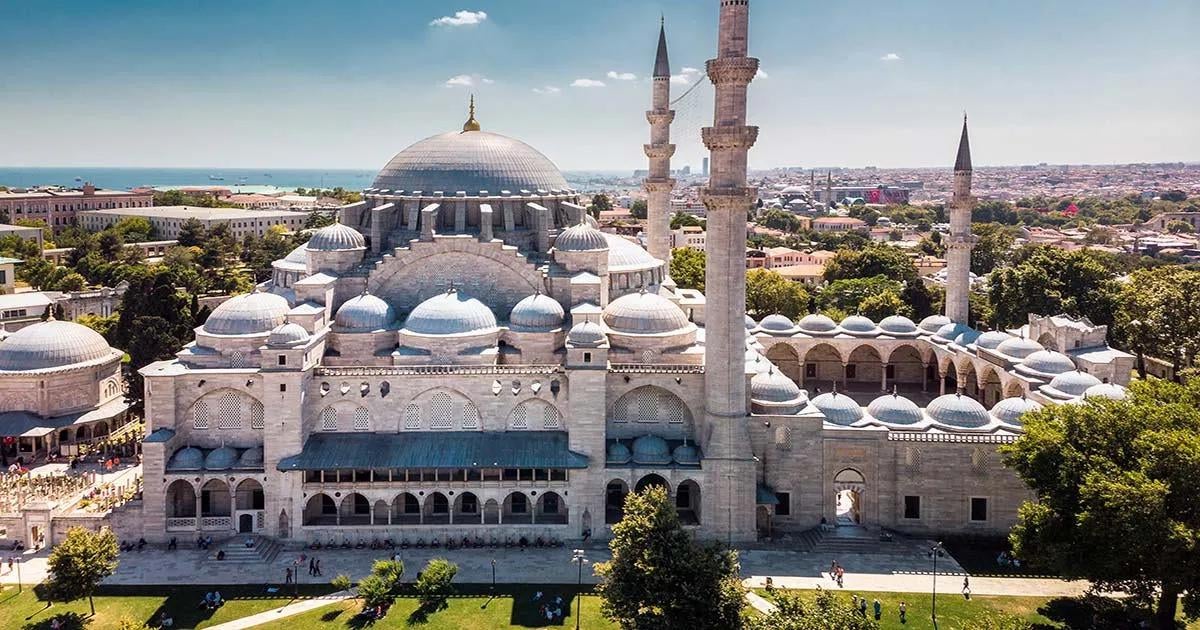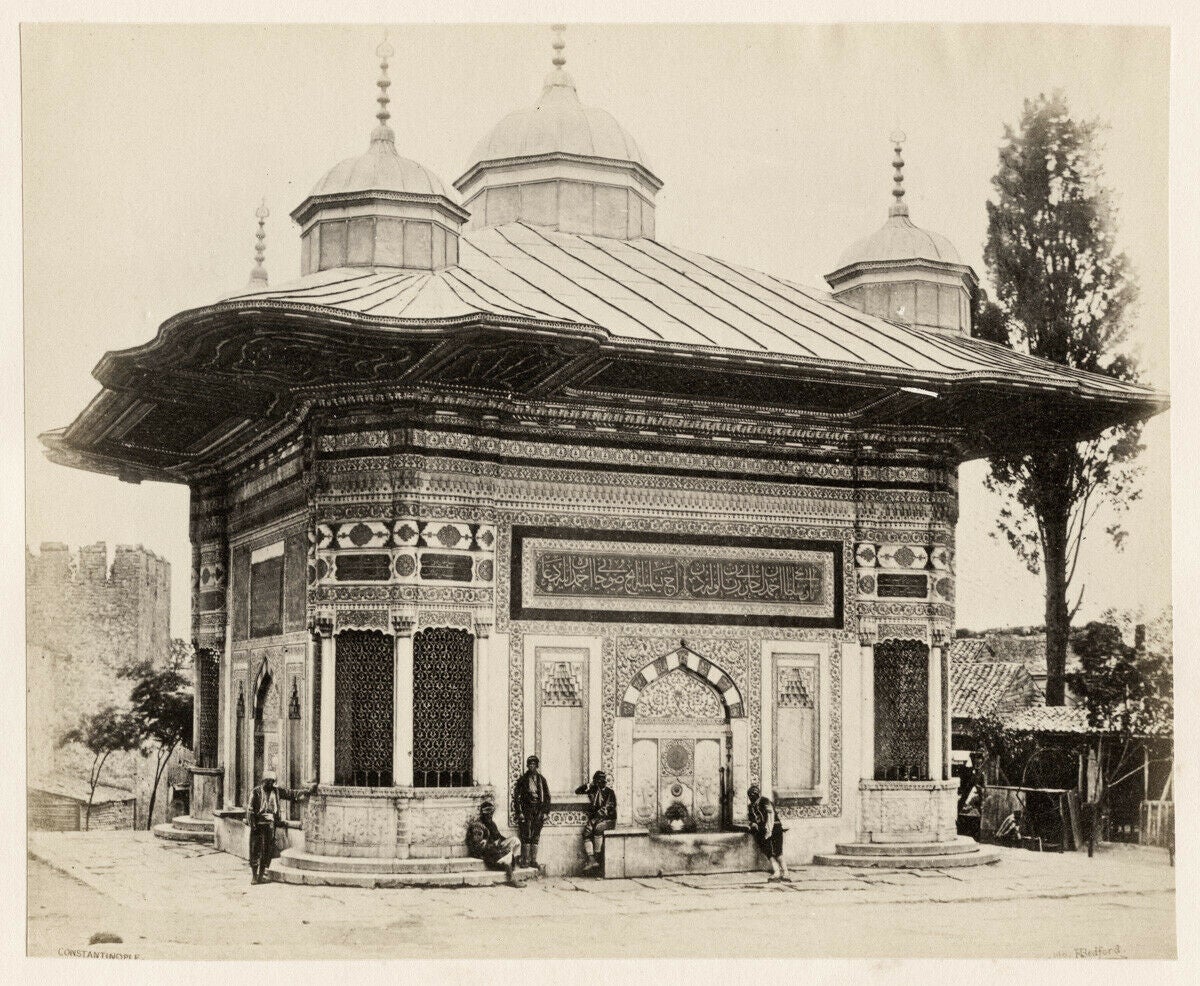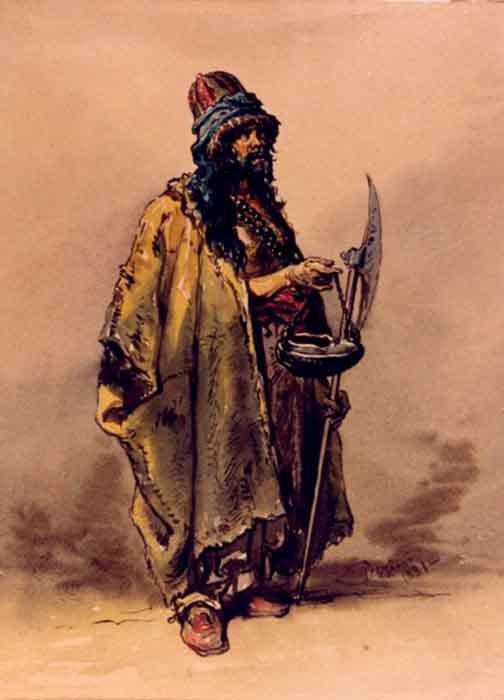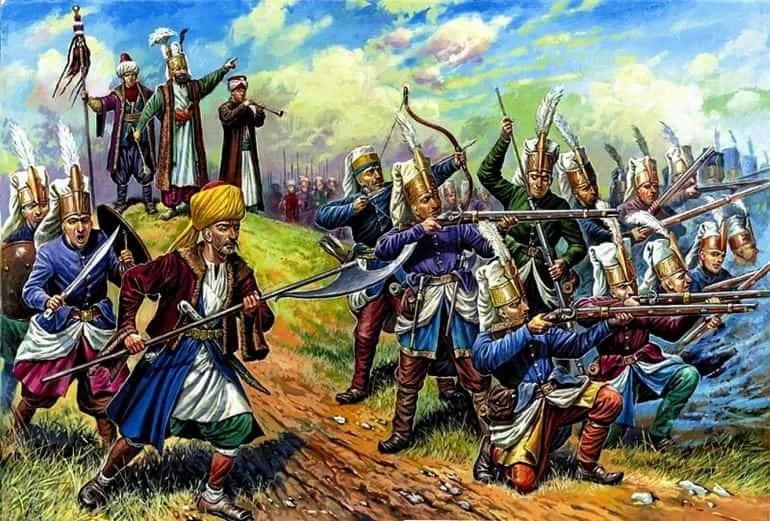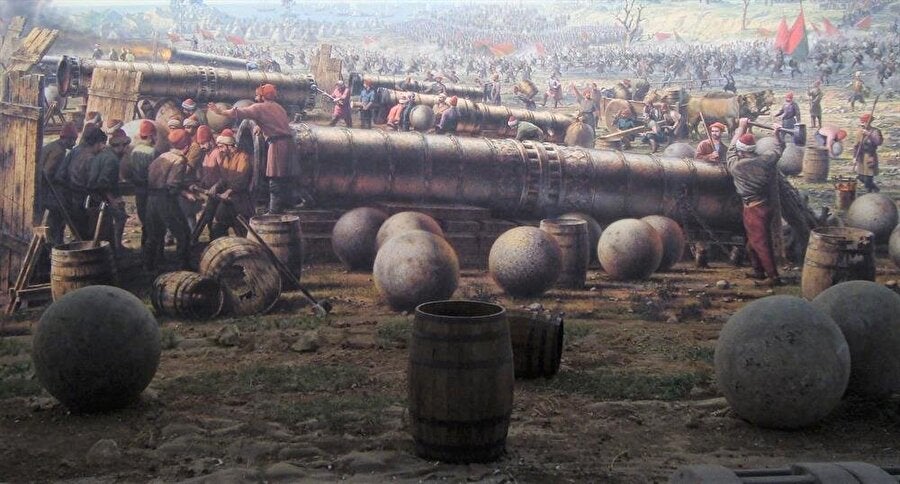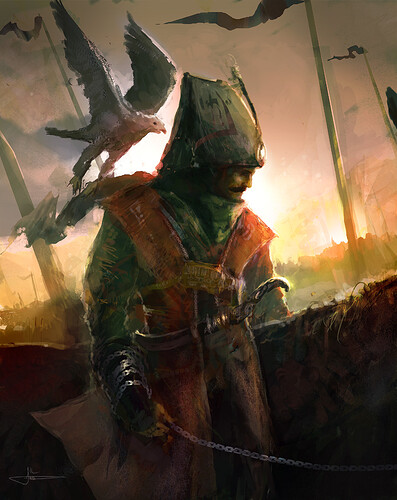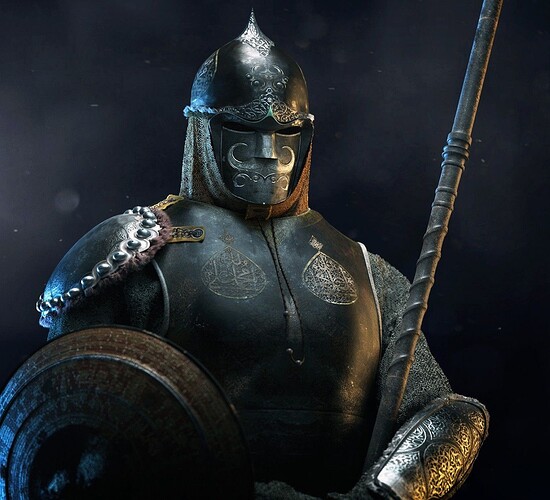The Ottomans (Osmans)
The Osman Empire (God knows why the English pronounce it with TT instead of S)
Janissaries, Gunpowder, Tribute
Difficulty: 2/3
Bonuses
- Mills provide a the boost to amount of resources of animal carcasses (Sheep and Deer)
- Scouts have range attacks and affected by blacksmith upgrades but cost 30 more food.
- Scouts gain +1 range attack for each age up.
- Cannot gather food from Boars, but have +5 carry capacity from Sheep and Deer.
- Gunpowder units fire 25% faster.
- Military Naval units gain +50 Wood and 50 Gold when sinking an enemy ship
- Unique Building: Serail
- Unique Unit: Dervish (replaces monks)
- Unique Unit: Great Bombards (Replaces Bombards)
- Unique Unit: Janissary (Replaces Cannoneers)
- Unique Unit: Grand Vizier
Captives: When killing enemy units and buildings with non-siege units, one gains captives equal to the Population value of the unit and Building.Grand Viziers can be used to extract captives from enemy structures.Captives can be used to produce Janissary units, Villagers or be traded for Gold.
Unique LandmarksFeudal Age
- Tomb of Ertuğrul: Grants improved scouts tech for free, Produces scouts 400% faster.
- Kapalıçarşı: Functions as a market. Has 50% improved exchange rates and doubles the value of trading Captives for gold. Captives can also be traded for all types of resources.
Castle Age
- Anadoluhisarı: Functions as a keep. Units killed by defensive structures grant double the amount of Captives. Keeps and Towers connected to its influence area does 33% more damage.
- Şahi topu: A landmark that functions as a bombard. But has to be packed up and moved which takes 5 seconds. Does colossal damage to defensive structures. Allows construction of bombards by Janissaries in Imperial age.
Imperial Age.
- Topkapı Palace: Functions as a Serail, Increases captivity limit by 50, A Valide Sultan is given, (limited to 1 unit), if a Valide Sultan is lost, it takes 240 seconds before another one is automatically produced for free. Valid Sultan functions exactly like a Grand Vizier.
- Bayezid II Mosque: Gains +5 captives every 1m. Relics stored in this structure also increase the production speed of Janissaries by 150% (Up to 2 relics can be stored)
Wonder: Süleymaniye Mosque.
Landmark Note:
Tomb of Ertuğrul does not have any surviving structures. Most structures and mosques of the oldest Ottoman architecture located in Söğüt did not survive today. As the tomb and mosques dedicated to Ertuğrul have been through several reconstructions. So nothing is certain about the origin. The Current Mausoleum was built in the 19th century, one could however Design it after one of the Early Ottoman mosques, such as the Hacı Özbek Mosque.
Şahi topu is a bit special. It is a landmark that behaves more like a movable defensive structure, similar to a Mongol Landmark.This means that does not take extra damage from Culverings or Springalds.It is however vournarable to anything that does bonus damage to buildings. And units would use torches as if it was any other building. It has the movement speed of an unupgraded Mongol Structure.Also, Who doesn’t want a MEGA Sized cannon (which Turks were so known for) in AOE4!?
Unique Buildings:
- Seraglio (I, 4 Captives 75W): Increases captivity limit by 10.
Unique Units:
- Grand Vizier (I, 150G): A unit that when garrisoned, grants an influenced area that lowers the resource cost of buildings/units/technology within its influence area.If enemies/friendly structures are within its influence area, they are rendered neutral and provide 1 captive per structure every 30 seconds, as long as they are under the influence of the Grand Vizier (does not apply to defensive structures such as TownCenters, Landmarks, Walls, Keeps and Towers) (Limited to 1 Grand Vizier)
- Dervish (II, 250F): Religious unit that cost food instead of gold and can function as a villager, able to gather resources like a villager, but not construct buildings.
- Janissary (II, 1 Captive 50G): Starts off as a Archer unit but becomes a Gunpowder unit with a Castle Age upgrade.
- Great Bombards (IV, 400W 600G): A bombard but greater, doing much greater damage against buildings and ships.
Technologies
- Zhigir (II, 150F 100G):
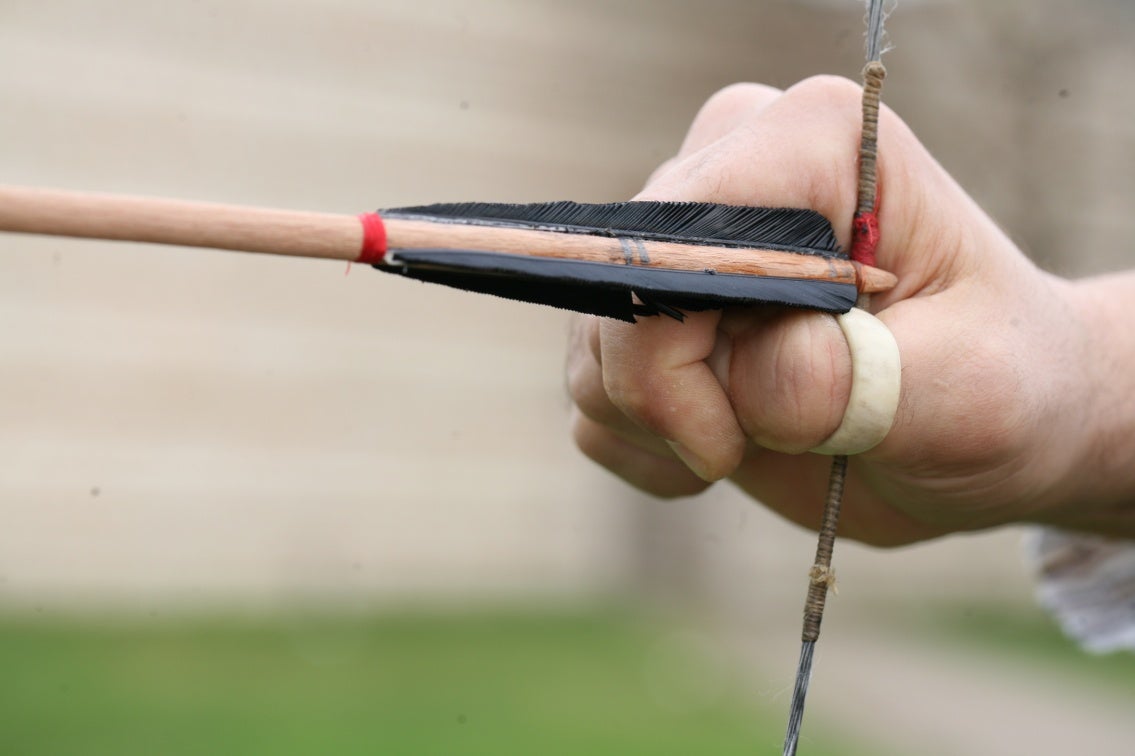
Zhigir thumb ring used for archery
Increases fire rate by Scouts and Archers by 15%. Researched at Archery Range.
- Ghazis (II, 150F 50G):
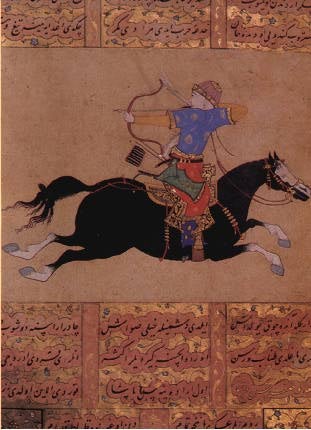
Illustration of the Ghazi warrior tribe by the Osmans
Scouts are able to fire while moving. Researched at Archery Range.
- Kazasker (II, 100F 100G): Grand Vizier Influence now grants +1 captive when friendly units die within its influence. Researched at Barracks.
- Barbary Piracy (III, 100F 100G):

Ottoman corsairs fasing dutch fleet.
Increases bounty gained from sinking enemy ship by 25. Researched at Docks.
- Thalassocracy (III, 250W 150G): Increases production speed from docks by 20%. Researched at Docks.
- Janissary Sappers (III, 300W 200G): Janissaries are able to construct additional siege weapons such as Mangonels, Trebuchets in, age III,facing and Culverins in age IV. Research at Blacksmith.
- Surgery Tools (IV, 700G):
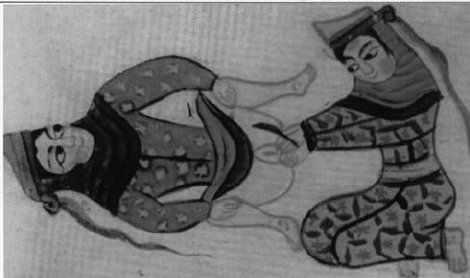
Illustration of surgery tools used by Ceriye trained in medicine
Seraglio now provides healing to nearby units. Research at Madrasa
- Monobloc Pumps (IV 200F 350G): Ships no longer suffer damage over time when caught on fire. Research at Madrasa.
- Guns of Orban (IV, 300F 700G): Bombards, Cannon emplacement, and Xebec have a +1 Range. Research at Blacksmith.
- Mehterân (IV 300F 300G): Janissaries provide 25% faster attack speed to nearby units when standing still. Research at Madrasa.
Additional Notes:
The Architecture of the Ottoman empire would be a continuation of the Seljuk and Beylik architecture. While also incorporating local Byzantine influences. New styles took shape in capital cities, and three main types of structure predominated early in the period. Single-domed Mosques (Example Green mosque of Iznik). “T-plan” Buildings (Example Green Mosque in Bursa) and Multi-domed buildings (example Great Mosque of Bursa). This form of Early Ottoman architecture would be covered by the Dark and Feudal age. Over time the Ottomans would implement more European designs, the latter being known as “Classical” Ottoman architecture that Castle and Imperial age would cover. A Period is most strongly associated with the works of Mimar Sinan, who was the chief court architect under the three sultans between 1538 and 1588. It also coincided with the start of the period of Suleiman the Magnificent, which ushered in Ottoman political and cultural development. Ottoman architecture at this time was strongly influenced by Byzantine Architecture, particularly the Hagia Sophia.
Naval units: Ottoman Navy would take on the design of the Abbasid Navy units. Keeping the Dhow, Baglah, and Xebec design.
Language progression: the Turkish language has a long history related to the Turkic people. Ottoman Turkish was highly influenced by Arabic and Persian, accounting for 88% of its vocabulary. The Arabic borrowings were borrowed through Persian and not through direct exposure to Arabic.
However, there is important to note that Ottoman Turkish would be divided among its people, as it was spoken in 3 forms.
- Fasih Türkçe (Eloquent Turkish): the language of poetry and administration, Ottoman Turkish in its strict sense; (Grand Vizier, Kings, Knights, Military Naval units, and Janissaries)
- Orta Türkçe (Middle Turkish): the language of higher classes and trade; (Traders, MaA, Crossbowmen, Siege)
- Kaba Türkçe (Rough Turkish): the language of lower classes. (Villagers, Scouts, Spearmen, and Archers)
Historically, Ottoman Turkish was transformed in three eras:
Eski Osmanlı Türkçesi (Old Ottoman Turkish): the version of Ottoman Turkish used until the 16th century. It was almost identical to the Turkish used by the Seljuk empire and Anatolian beyliks and was often regarded as part of Eski Anadolu Türkçesi (Old Anatolian Turkish).
Orta Osmanlı Türkçesi (Middle Ottoman Turkish) or Klasik Osmanlıca (Classical Ottoman Turkish): the language of poetry and administration from the 16th century until Tanzimat.
Yeni Osmanlı Türkçesi (New Ottoman Turkish): the version shaped from the 1850s to the 20th century under the influence of journalism and Western-oriented literature.
Landmark references:
Tomb of Ertuğrul:
A tomb and mosque dedicated to Ertuğrul is said to have been built by Osman I at Söğüt, but due to several rebuildings nothing certain can be said about the origin of these structures. The current mausoleum was built by Sultan Abdul Hamid II (1842 – 1918) in the late 19th century. The town of Söğüt celebrates an annual festival to the memory of the early Osmans.
Very little is known about Ertuğrul, but according to Legend, he was the father of Osman I, the founder of the Ottoman empire, he was a part of the Oghuz tribe that fled from the Mongols into Anatolia, where he encountered the Seljuk tribes and offered his services. As a result of his assistance to the Seljuks against the Byzantines, Ertuğrul was granted lands in Karaca Dağ, a mountainous area between Diyarbakır and Urfa, by Kayqubad I, the Seljuk Sultan of Rum. One account indicates that the Seljuk leader’s rationale for granting Ertuğrul land was for Ertuğrul to repel any hostile incursion from the Byzantines or other adversaries. Later, he received the village of Söğüt which he conquered together with the surrounding lands.
That village, where he later died, became the Ottoman capital under his son, Osman I. Osman’s mother has been referred to as Halime Hatun in later myths, and there is a grave outside the Ertuğrul Gâzi Tomb that bears the name, but it is disputed.
Kapalıçarşı:
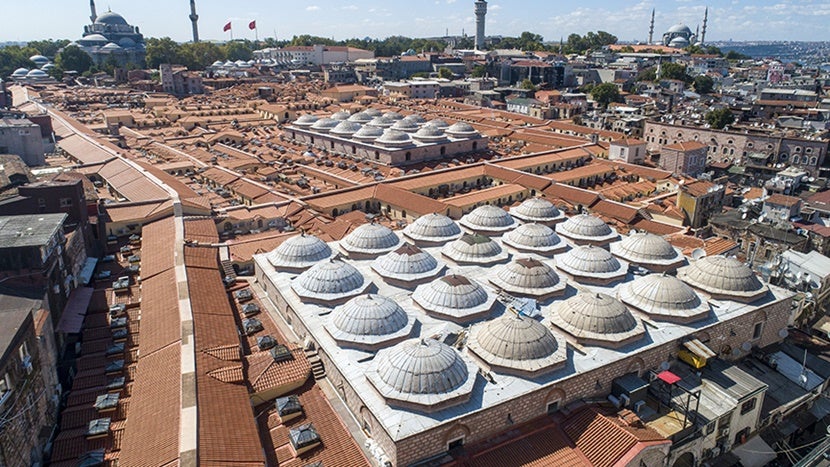
Massive complex of the Grand Bazaar
Also known as the Grand Bazaar. (Yes the Abbasid Upgrade). Istanbul is one of the largest and oldest Covered Markets (which is the literal meaning of its name) in the world. And is still in use today, being listed as one of the world’s most visited tourist attractions, with 91 million annual visitors. It is often regarded as the First Shopping mall in the world. The construction of the future Grand Bazaar’s core started shortly after the Ottoman conquest of Constantinople and was part of a broader initiative to stimulate economic prosperity in Istanbul.
At the beginning of the 17th Century, the Grand Bazaar had already achieved its final form. Due to the enormous extent of the Ottoman Empire at this time, it became a market that was unrivaled in Europe with regard to the abundance, variety, and quality of the goods on sale.
Anadoluhisarı:
The complex is the oldest surviving Turkish architectural structure built in Istanbul. Anadoluhisarı was built between 1393 and 1394 on the commission of the Ottoman Sultan Bayezid I, as part of his preparations for a siege on the then-Byzantine city of Constantinople.
Constantinople was blockaded from 1394 on, but Bayezid’s campaign was first interrupted by the Crusade of Nicopolis, and then ended with his defeat at the Battle of Ankara. An 11-year civil war followed, which ended with the ascent of Mehmed I to the throne. His grandson, Sultan Mehmed II reinforced the fortress with a two-meter-thick wall and three additional watchtowers and added further extensions, including a warehouse and living quarters. As part of his plans to launch a renewed military campaign to conquer Constantinople, Mehmed II further built a sister structure to Anadoluhisarı across the Bosphorus called Rumelihisarı, and the two fortresses worked in tandem in 1453 to throttle all maritime traffic along the Bosphorus, thus helping the Ottomans achieve their goal of making the city of Constantinople (later renamed Istanbul) their new imperial capital.
Şahi topu:
Also known as the Dardanelles Gun, The Basilica or Great Turkish Bombard. Is a 15th-century Siege Cannon, specifically a super-sized Bombard which saw action as late as 1807, when a Royal Navy force appeared and commenced the Dardanelles Operation. Turkish forces loaded the ancient relics with propellant and projectiles, then fired them at the British ships. The British squadron suffered 28 casualties from this bombardment. It was built in 1464 by Turkish military engineer Munir Ali and modeled after the Orban bombard that was used for the Ottoman besiegers of Constantinople in 1453. At the siege of Constantinople in 1453, the Ottomans employed a number of cannons, anywhere from 12 to 62. They were built at foundries that employed Turkish cannon founders and technicians, most notably Saruca, in addition to at least one foreign cannon founder, Orban. Most of the cannons at the siege were built by Turkish engineers, including a large bombard by Saruca, while one cannon was built by Orban, who also contributed a large bombard.
Orban was from Brassó, Kingdom of Hungary, before working for the Ottoman army in 1453. Ali’s piece is assumed to have closely followed the outline of the large bombards used at the siege of Constantinople.
Topkapı Palace:
In the 15th and 16th centuries it served as the main residence and administrative headquarters of the Ottoman sultans. It was given the name Topkapı, meaning Cannon Gate, in the 19th century. The complex expanded over the centuries, with major renovations after the 1509 earthquake and the 1665 fire. The palace complex consists of four main courtyards and many smaller buildings. Female members of the Sultan’s family lived in the harem, and leading state officials, including the Grand Vizier, held meetings in the Imperial Council building. After Sultan Mehmed II’s conquest of Constantinople in 1453, the Great Palace of Constantinople was largely in ruins.
Mehmed II ordered that the construction of Topkapı Palace begin in 1459. According to an account of the contemporary historian Critobulus of Imbros the sultan “took care to summon the very best workmen from everywhere – masons and stonecutters and carpenters … For he was constructing great edifices which were to be worth seeing and should in every respect vie with the greatest and best of the past.”
Later sultans made various modifications to the palace, though Mehmed II’s basic layout was mostly preserved. The palace was significantly expanded between 1520 and 1560, during the reign of Suleyman the Magnificent. The Ottoman Empire had expanded rapidly and Suleyman wanted his residence to reflect its growing power. The chief architect in this period was the Persian Alaüddin, also known as Acem Ali. He was also responsible for the expansion of the Harem.
Bayezid II Mosque:
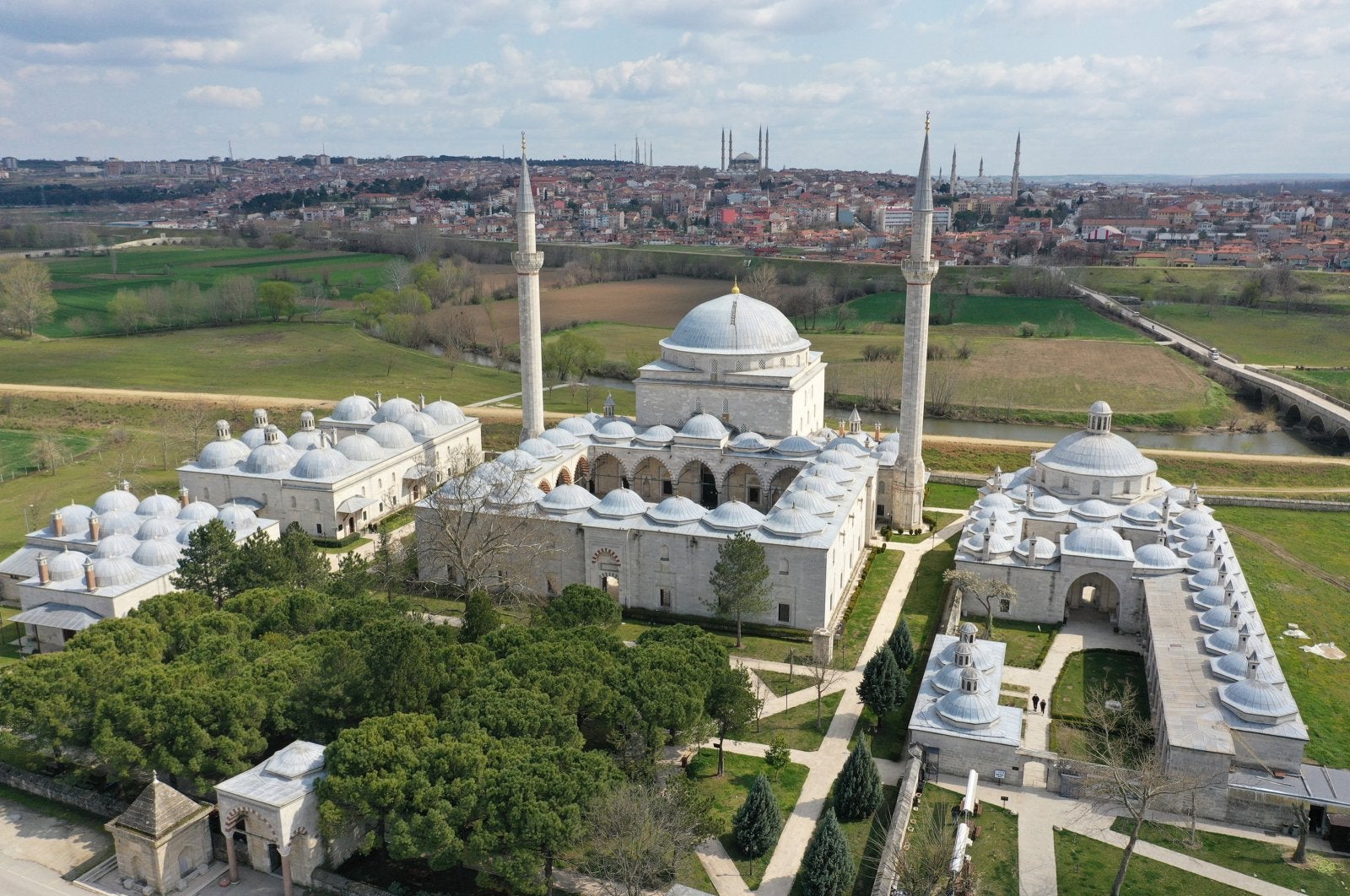
The Beyazid Mosque was commissioned by the Ottoman Sultan Bayezid II, and was the second large imperial mosque complex (or selatin mosque) to be erected in Istanbul after the conquest in 1453. The earlier imperial complex, the Fatih Mosque, was later destroyed by earthquakes and completely rebuilt in a different style. As a result, the Beyazid complex is the oldest imperial complex in Istanbul that is preserved in more or less its original form, making it of considerable historical and architectural significance. The mosque was constructed between 1500 and 1505, with a külliye (religious and charitable comp This included a madrasa (theological college), completed in 1507; a large hammam (bathhouse), completed some time before 1507; an imaret (soup kitchen); a caravanserai; and several mausolea including the türbe of Bayezid II himself.
The chief architect of the mosque is not directly known. Based on Ottoman documents that mention architects during Bayezit II’s reign, Yakubşah ibn Islamşah is the most likely architect. One of Yakubşah’s assistants, Yusuf ibn Papas, finished off the work on the madrasa. The architect was a nephew of the Greek architect of the Fatih Mosque (Atik Sinan or Christodoulos), is known from a grant of Bayezid II. This grant confirms the endowment by Mehmed II of the Greek Orthodox Church of Saint Mary of the Mongols, the only church in Istanbul that was never converted into a mosque, to the mother of Christodoulos (the Bayezid II Mosque’s architect’s grandmother) in acknowledgment of the two architects’ work.
Wonder: Süleymaniye Mosque:
Suleyman The Magnificent chose the architect Mimar Sinan to create a mosque in remembrance of his son Shehzade Mehmed. Suleyman was beyond impressed with Sinan’s completion that he decided to have him design a mosque after himself. This mosque would represent the eminence of the Ottoman Empire. Sinan built around two hundred buildings in Constantinople. He used inspiration from the Hagia Sophia and the Bayezid II Mosque to design the Süleymaniye Mosque. This holy structure replaced the old palace of Topkapi which still had functional use at the time. However, as ordered by Sultan, the palace was demolished and redeveloped. The design of the Süleymaniye also plays on Süleyman’s self-conscious representation of himself as a ‘second Solomon.’ It references the Dome of the Rock, which was built on the site of the Temple of Solomon, as well as Justinian’s boast upon the completion of the Hagia Sophia: “Solomon, I have surpassed thee!”
Unique Building:
Seraglio:
- Health: 700
These structures increase the total Captivity limit by 10. To a total of 100, But also function as a supportive structure providing healing to the nearby unit with the Surgery Tools.
Şahi topu:
- Health: 4000
- Attack: 1000 Ranged (Giant Bombard), + 2000 vs Walls. Rate of fire: 8s. (Giant Bombard)
- Range: 12 Tiles.
- Armor: 0
- Pierce armor: 50.
- Speed: 1 tiles/s (When Packed)
Unique Unit:
Grand Vizier (also applies to Valide Sultan landmark unit):
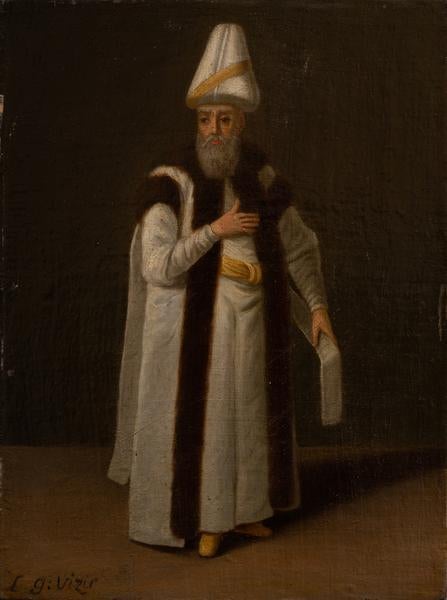
Topkapı Palace unique Landmark unit.
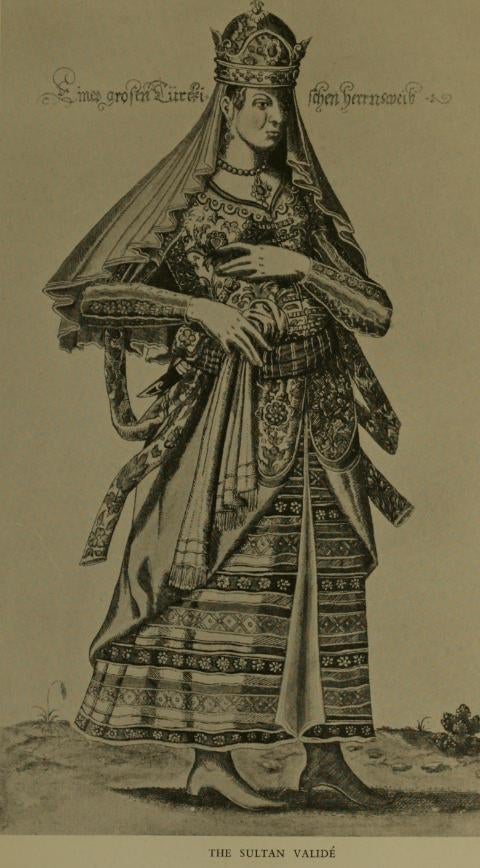
- Health: 85
- Armor: 0
- Pierce Armor: 0
- Speed: 1.12 tiles/s
This unit functions as a supervisor when garrisoned inside Structures such as Town Centers, Towers, and Keeps. When Garrisoned, it provides an area of influence area that lowers the resource cost of buildings/units/technology within its influence area. If enemies/friendly teammate structures are within its influence area, they are rendered neutral and provide 1 captive per structure every 120 seconds, as long as they are under the influence of the Grand Vizier (does not apply to defensive structures such as TownCenters, Landmarks, Walls, Keeps and Towers) (Limited to 1 Grand Vizier).
- Health: 90
- Attack: 12 (Bardiche)
- Attack Speed: 3.75
- Armor: 0
- Pierce Armor: 0
- Speed: 1.3 tiles/s
A religious unit that cost food instead of Gold. And moves slightly faster than a regular Monk/Imam. It is also able to gather resources like a villager (but unable to build), and defend itself like villagers.
Janissaries Multitude of weapons. (Bows, Arquebus and Sword being their main weapons)
- Health: 85/110/150
- Attack: 5/7 Ranged (Bow); +5/+7 vs Light melee; 10/14/16 Melee (Sword); 35 ranged (Arquebus);
- Rate of fire: 1.5s Ranged (Bow); 1.25s (Sword); 2s (Arquebus)
- Range: 5 tiles (Bow); 4 tiles (Arquebus)
- Armor: 0
- Pierce Armor: 0
- Speed: 1.25 tiles/s
A unit that can be bought cheaply with Captives + gold.The unit starts off as an archer unit with melee capabilities. When upgraded into Elite Janissary, they replace the bow with an Arquebus. And moves slightly faster than a regular gunpowder infantry.With the Sapper upgrade, they are also able to construct additional siege weapons such as Mangonels, Trebuchets, and Bombards in the field.
- Health: 300
- Attack: 150 Ranged (Cannon); Bonus vs Naval and Buildings +550 Rate of fire: 5.5s Ranged (Cannon);
- Range: 10 tiles (Cannon);
- Armor: 0
- Pierce armor: 30 Speed: 0.62 tiles/s
A unique Bombard that is bigger and stronger than a regular bombard. However, has a slightly lower reload speed.
Write-up:
This Civilization was far more… Complicated to make than one first presumes it to be. Due to complicated history, and the fact that so much is documented about this Empire, one could spend an eternity diving into documentaries, books, and all sorts of things about the Ottoman empire. Another difficulty was its lack of knowledge of the early founding of the Ottoman empire. Originally I wanted to make “Turks” that encompass all of the Turkish groups, but the more you read into it, the more you realize they were rather different from each other to an extent and had their own motivation and goals. While they certainly share a common Ancestry, the more you read into the Ottomans, the more see that just Ottomans by themselves have enough material to work with to make a fully fleshed Civilization.
Trying to mix in Seljuks, Oghuz, and many of the other Turkish tribes and empires the Ottoman Empire eventually expanded over. Would just make it very cluttered in its own sense and just make it more complicated.
However, it is not to be said that I haven’t forgotten their Turkic roots, this is hence why I decided to make their Scouts rather early offensive units. That uses their Bow attack as the main attack, thus functioning as a very early Horse-Cavalry, with the ability to harass the opponent. Using scouts more offensively in the early ages allows for the gain of early captives.The Captive system functions as an additional resource pool. Where the construction of Serail is required to increase the limit of the resource pool, much like housing does for the population.
Another challenge was avoiding the usage of the Term: Slavery. Due to today’s society’s sensitivity around this term and topic. Just beginning a word with the Netflix logo nowadays turns everyone’s attention towards you.
This is why I tried to find alternative means, that didn’t have such negative connotations attached to them. But there is no denying that Slavery played a massive part in the Ottoman empire. One could in technical terms say that the Ottoman empire was even ruled by Slaves at certain points in history.
The Janissaries are prime examples of this having a huge influence on the Ottoman regime, very often being Kingmakers and influence the decisions made by the empire.
However, being a Slave in the Ottoman empire was very different than being a slave in the Americas. Slaves in the Ottoman empire were often seen as an opportunity to climb the social ranks, as many slaves, especially those in the service to the Sultan, were given opportunities for education, and given important roles in the military, administration, science, and entertainment. So quite often one would even see families willing to give away one of their members into slavery. In the hopes for them to climb the hierarchy and thus be able to support their family with their higher social status and newfound influence. While this is certainly not the situation for all slaves. I think I will rather choose to be a slave in the Ottoman empire than in the Americas if I was given the choice if forced into slavery.
Another thing I wanted to try to emphasize is the importance Women had in Ottoman society, today it’s easy to think that Muslim women had no power or rights in Islamic society. At least in the Ottoman empire, there were periods where the one ruling the empire was the Valide Sultan, the mother of the Sultan, usually the “legal wife” of the previous Sultan. The Valide Sultan, being a former Ceriye, a Concubine of the Sultan’s Harem. Again, technically a Slave.While other women of harems. Be it the sultan’s education harem or another person of importance in the ottoman empire. Were often given quite high education, and were often given eduction within medicine, many becoming Physicians and even Surgeons during these times.
And then there is Gunpowder. The hallmark of the Ottoman. Big guns and the good stuff we like. This is where I wanted to give the Ottomans something special. A giant cannon landmark, that could possibly serve an interesting unique role in the game. Being a type of siege unit that is “difficult” to take down. But more importantly, blast through defenses. And acting very similar to a Mongol landmark, such as the Kurultai, moving alongside the armies, seeing action on the front lines. nd again, a nudge to their Turkic ancestry.
And given access to early bombards.
I also did not want to forget the Maritime legacy they left behind. The famous Barbary Pirates, such as the famous pirate/Corsair and later becoming Admiral, Red Beard, also known as Barbarossa. This is why I wanted to give them the Piracy ability for their naval vessels. Giving their navy a unique trait that is a proven concept for the Mongols.And also compensation for being unable to gain captives in naval fights, and Janissaries not having to much use in the open seas. But should be interesting nonetheless.
Another Challenge was the Avoidance to use Imams, as Imams are unique units to Abbasids. This is where Dervish comes into the picture. A very interesting Turkic religious figure, well famous today as those guys that like to Spin around all day.
The Dervish is also interesting in the fact they combine Mysticism with Islam. And have sort of parallel to Buddhist monks. Taking a vow of Poverty, prohibited to Beg for their own good and the money they collect from begging is to be given to other poor people. They were also quite often found to be doing work in common professions such as being fishermen as for example. This helps them to be a little more unique compared to other religious units, being able to function as a “villager” in a term.
So yeah, the Ottomans have a lot to bring to the table.
Next up: Spain
If you enjoyed this and are interested in reading my other Civilization concept here is a list:
Southeast Asia:
East Asia:
Europe:
